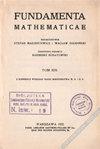粗熵
IF 0.5
3区 数学
Q3 MATHEMATICS
引用次数: 4
摘要
粗略几何研究大规模的度量空间。我们的目标是从粗略的角度研究动力学。为此,我们引入了拓扑熵的粗略版本,适用于无界度量空间,与这些空间上的粗略观点一致。与通常的拓扑熵一样,粗熵测量轨道的散度。根据Bowen的想法,我们使用$(n,\varepsilon)$分隔或$(n、\varepsilion)$生成集。然而,我们必须让$\varepsilon$变为无穷大,而不是零。本文章由计算机程序翻译,如有差异,请以英文原文为准。
Coarse entropy
Coarse geometry studies metric spaces on the large scale. Our goal here is to study dynamics from a coarse point of view. To this end we introduce a coarse version of topological entropy, suitable for unbounded metric spaces, consistent with the coarse perspective on such spaces. As is the case with the usual topological entropy, the coarse entropy measures the divergence of orbits. Following Bowen's ideas, we use $(n,\varepsilon)$-separated or $(n,\varepsilon)$-spanning sets. However, we have to let $\varepsilon$ go to infinity rather than to zero.
求助全文
通过发布文献求助,成功后即可免费获取论文全文。
去求助
来源期刊

Fundamenta Mathematicae
数学-数学
CiteScore
1.00
自引率
0.00%
发文量
44
审稿时长
6-12 weeks
期刊介绍:
FUNDAMENTA MATHEMATICAE concentrates on papers devoted to
Set Theory,
Mathematical Logic and Foundations of Mathematics,
Topology and its Interactions with Algebra,
Dynamical Systems.
 求助内容:
求助内容: 应助结果提醒方式:
应助结果提醒方式:


